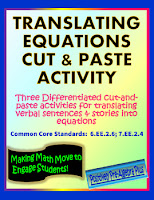As educators we are so fortunate to get a reset
each year. At the beginning of each school year we get to start fresh with a
new group of students, a new supply of materials, and a new attitude. For some of my fellow teachers, they get to
begin the new year with a new group of students since their course is a
half-year offering. Actually the start
of a new calendar year is an opportunity for each one of us to start fresh, so
why not try it in your classroom?
I have often said that teaching middle school is
different every day because I never know who is walking into class that
day. My kids fluctuate constantly
between cute little kids, uncertain tweens, mouthy teens, and mature young
adults. We need to give them the space,
encouragement, and unconditional love that allows them to grow into the person
they are meant to be. But, we forget to
give ourselves the same grace to grow and mature as educators. If you are unhappy with the way your school
year is going, make adjustments. Are
some things going better than you thought?
Do more of it! As you take a much
needed break to recharge the teacher batteries, spend some time reflecting on
how things are going personally and professionally. Then make adjustments to get 2017 off to an
incredible start!
Here are a few changes I am looking to implement
in January:
1. Add a teacher mailbox. My kids this year love notes. The tootling board I set up in August is
going strong and everyone loves to see a positive comment about themselves and
enjoy writing them about others. They
also love to leave little notes on my desk about various things, so I thought
adding a small mailbox for “notes to the teacher” would encourage them to keep
the communication coming.
2. Try an
interactive bulletin board. I have seen
so many that look great, but haven’t taken the plunge yet. By the time I was ready to think about
getting one up we had finished that unit.
Time is always the enemy and I plan to get this off the ground by going
with a more generic theme – Math With Friends.
Still tons to work out on the logistics, but I’m thinking of having my
classes compete against each other using positive behavior reinforcement as the
carrot. Classes would need to have 100%
homework completion for that day or a class average that exceeds a previously
agreed upon amount on a test or other assessment or some other type of behavior
that is being reinforced. I’m hoping
this will go well and I’ll be able to do a blog post on it in the near future.
Remember, you are the captain of your
classroom. Make it everything you want
it to be for you and your students. I’d
love to hear your ideas for mid-year resets or ideas for keeping the momentum
going in 2017.
Happy teaching and happy 2017!


















































